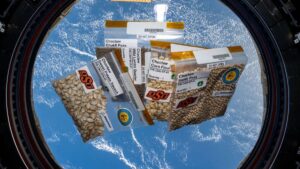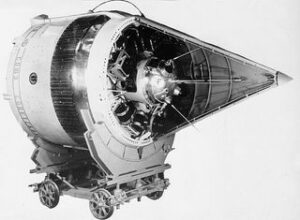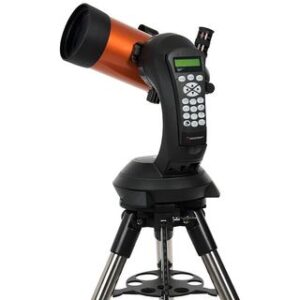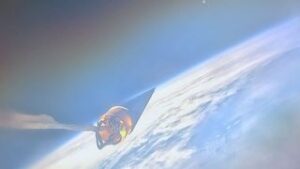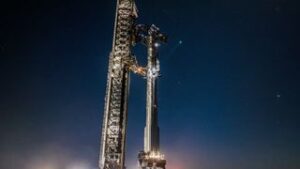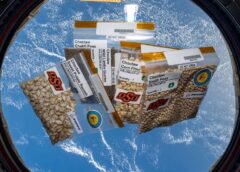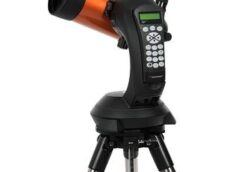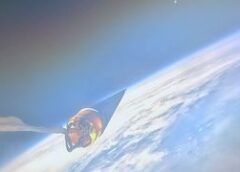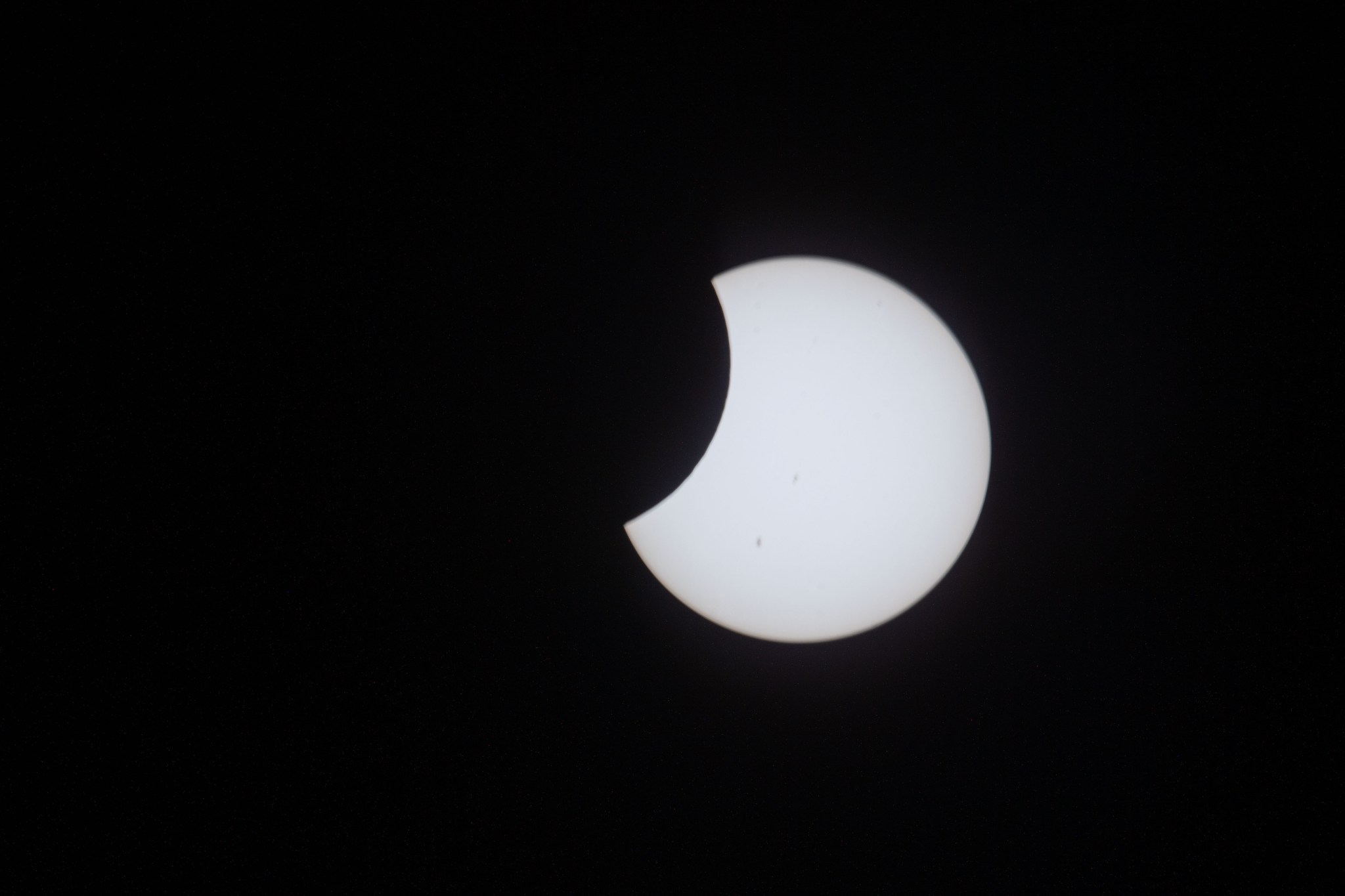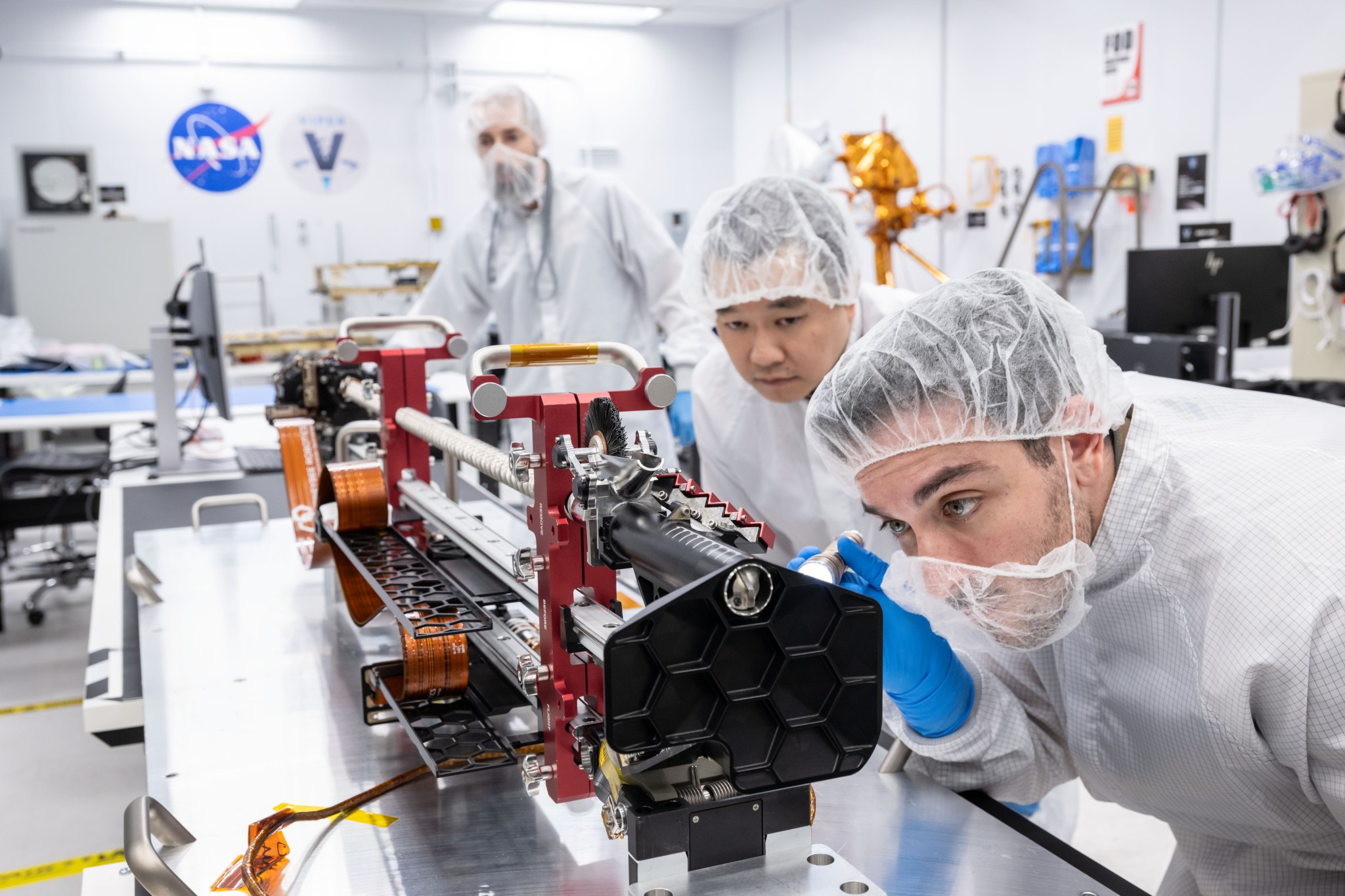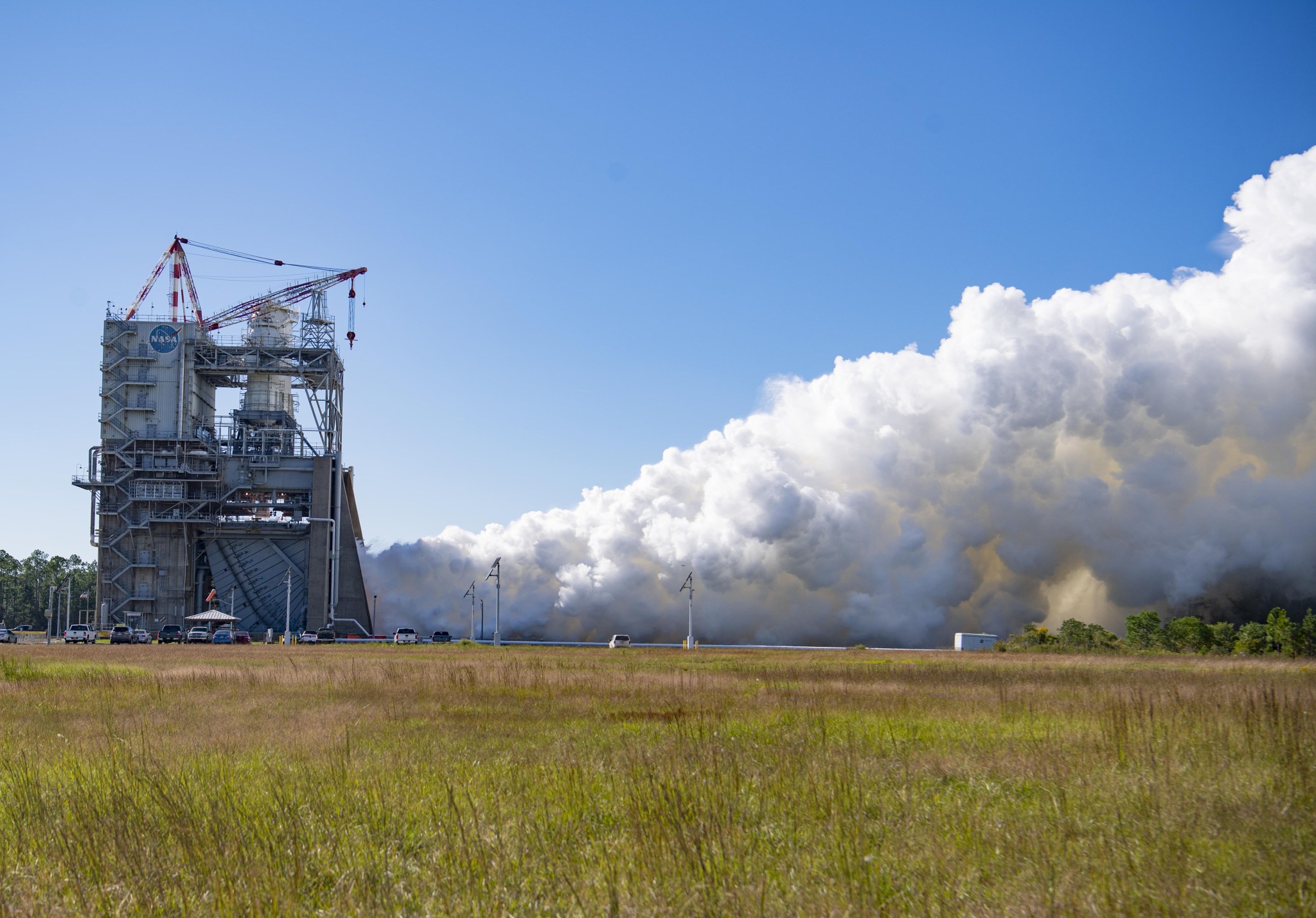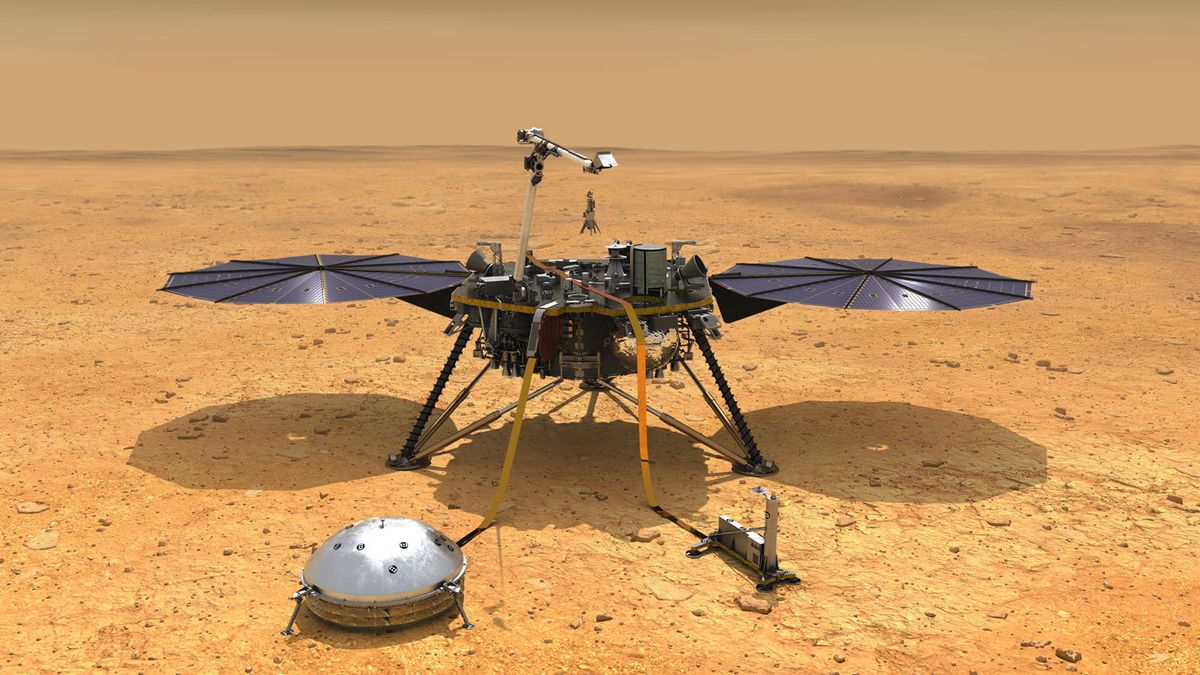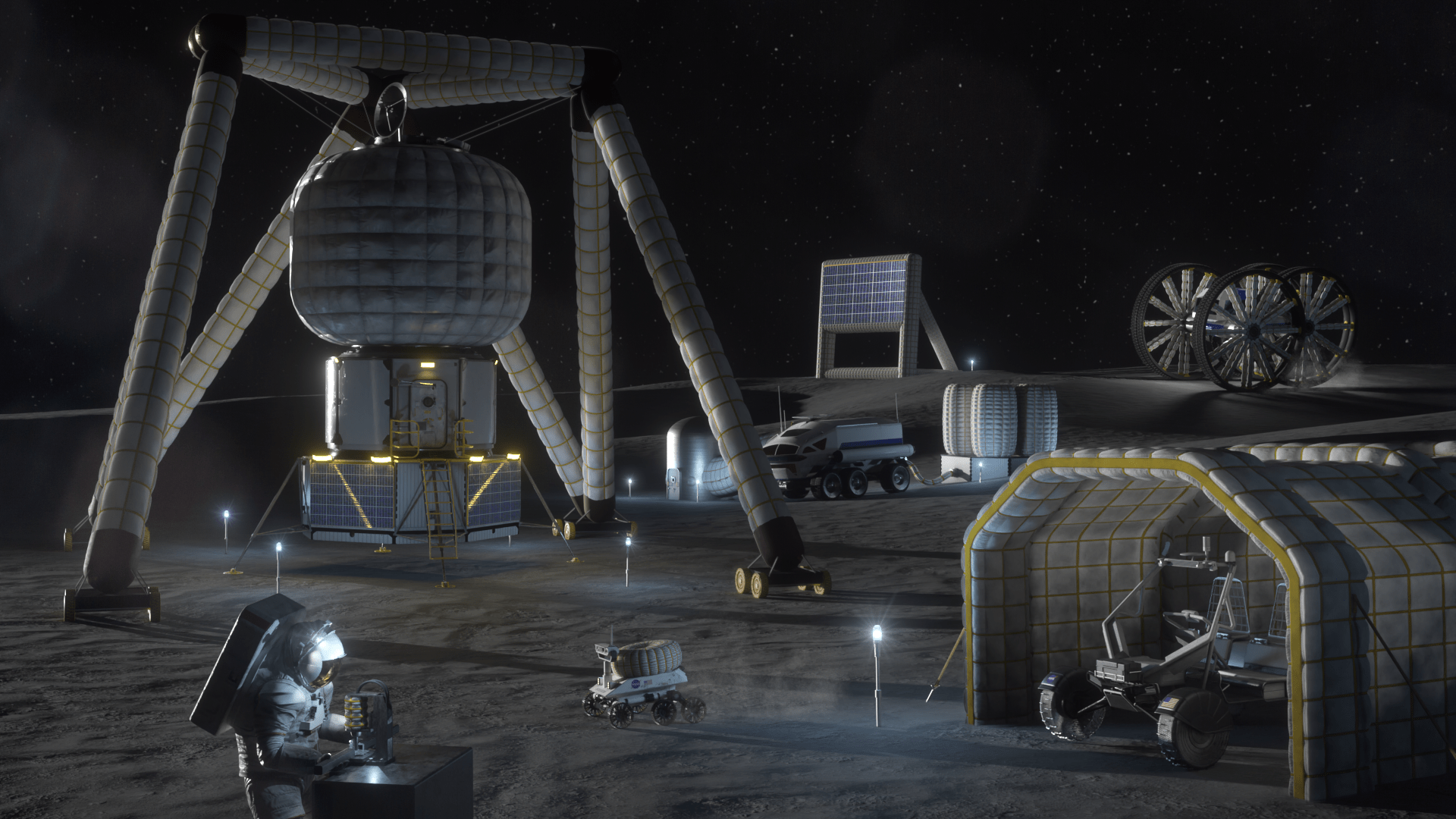NASA / Jasmin Moghbeli While aboard the International Space Station, astronaut Jasmin Moghbeli took this picture of the Moon passing in front of the Sun during the annular solar eclipse on Oct. 14, 2023. As the space station orbits Earth, astronauts take images of the planet below and phenomena in space. Visible in parts of the United States, Mexico, and many countries in South and Central America, millions of people in the Western Hemisphere experienced this eclipse. If you weren’t in the path of the annular eclipse, or you want…
Read MoreAll Together Now: Drill Joins Other Moon Rover Science Instruments
A team of engineers from NASA’s Johnson Space Center in Houston and Honeybee Robotics in Altadena, California inspect TRIDENT – short for The Regolith Ice Drill for Exploring New Terrain – shortly after its arrival at the integration and test facility. NASA/Robert Markowitz A team of engineers from NASA’s Johnson Space Center in Houston and Honeybee Robotics in Altadena, California, inspect TRIDENT – short for The Regolith Ice Drill for Exploring New Terrain – shortly after its arrival at the integration and test facility. In the coming months, the team…
Read MoreNASA Conducts 1st Hot Fire of New RS-25 Certification Test Series
2 min read NASA Conducts 1st Hot Fire of New RS-25 Certification Test Series NASA conducted the first hot fire of a new RS-25 test series Oct. 17, beginning the final round of certification testing ahead of production of an updated set of the engines for the SLS (Space Launch System) rocket. The engines will help power future Artemis missions to the Moon and beyond. NASA completed a full duration, 550-second hot fire of the RS-25 certification engine Oct. 17, beginning a critical test series to support future SLS (Space…
Read MoreMars was shaken by its strongest marsquake ever in 2022. Now we know what caused it
The strongest-ever quake to violently shake Mars arose not because of a crashing asteroid but rather the tectonic forces within the planet itself, scientists reported on Tuesday (Oct. 17). The new findings show the Red Planet is more seismically active than previously thought. On May 4, 2022, NASA‘s now-retired InSight lander recorded a magnitude 4.7 quake, five times stronger than the previous record holder of magnitude 4.2 that InSight measured in 2021. Unlike most marsquakes that cease within an hour, the reverberations from the summer quake continued for a record…
Read More‘Futurama’ team talks physics, humor and heart at NY Comic Con
NEW YORK — Much like its hapless protagonist, “Futurama” is a 20th-century creation with a new lease on life. After getting canceled three separate times in the past 20 years, “Futurama” has finally found a new home on Hulu. And, unlike a lot of “20 years later” revivals, the show’s new season has been pretty good so far. Part of the reason why is because its cast and crew have been incredibly consistent ever since the program debuted in 1999. Space.com had a chance to speak with some of those…
Read MoreBaja California Sur
The north coast of the Mexican state of Baja California Sur on the Pacific Ocean is pictured from the International Space Station as it orbited 258 miles above.
Read MoreSeeing Baja California Sur From Space
NASA The crew of the International Space Station saw this view of the north coast of the Mexican state of Baja California Sur as the space station orbited 258 miles above on Oct. 14, 2023. In 24 hours, the space station makes 16 orbits of Earth, traveling through 16 sunrises and sunsets. The station’s orbital path takes it over 90 percent of the Earth’s population, with astronauts taking millions of images of the planet below. See more photos of our planet here. Image credit: NASA
Read MoreNASA’s Roman Space Telescope will launch in 2027. Here’s how scientists are getting ready
NASA is mobilizing the scientific community to ensure the agency’s next big space telescope will be ready to deliver a “big picture” view of the universe almost immediately after launching. The Nancy Grace Roman Telescope — also known as the Roman Space Telescope, or just Roman — is set to launch in 2027 and will view the cosmos with a staggeringly wide field of view. Its big-picture observations of distant and early galaxies could help scientists solve the mysteries of dark matter and dark energy. Collectively, this so-called dark universe…
Read More60 Years Ago: NASA Selects Its Third Group of Astronauts
On Oct. 17, 1963, NASA announced the selection of its third group of astronauts. Chosen from 720 military and civilian applicants, the newest group of 14 astronauts comprised the best educated class up to that time. Seven represented the U.S. Air Force, four the U.S. Navy, one the U.S. Marine Corps, and two were civilians. NASA selected them to fly the two-seat Gemini spacecraft designed to test techniques for the Apollo Moon landing program as well as the Apollo missions themselves. Tragically, four of their members died before making their…
Read MoreStudent innovators invited to develop BIG ideas for lunar inflatables
With its “Inflatable Systems for Lunar Operations” theme, NASA’s 2024 Breakthrough, Innovative, and Game-Changing (BIG) Idea Challenge invites student innovators to build and demonstrate how their concepts can benefit future missions to the Moon and beyond. Inflatable systems could greatly reduce the mass and stowed volume of science and exploration payloads, which is critical for lowering delivery costs to deep space destinations. As the first step in the next era of human space exploration, NASA’s Artemis program brings together commercial, international, and academic partners to explore the Moon for the…
Read More